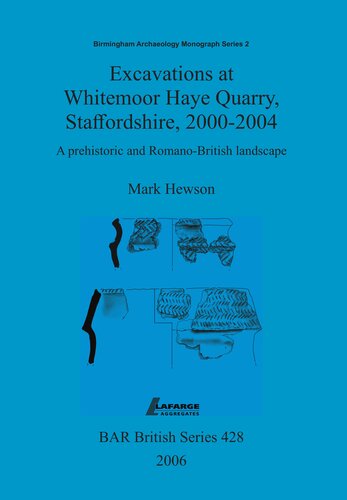

Most ebook files are in PDF format, so you can easily read them using various software such as Foxit Reader or directly on the Google Chrome browser.
Some ebook files are released by publishers in other formats such as .awz, .mobi, .epub, .fb2, etc. You may need to install specific software to read these formats on mobile/PC, such as Calibre.
Please read the tutorial at this link: https://ebookbell.com/faq
We offer FREE conversion to the popular formats you request; however, this may take some time. Therefore, right after payment, please email us, and we will try to provide the service as quickly as possible.
For some exceptional file formats or broken links (if any), please refrain from opening any disputes. Instead, email us first, and we will try to assist within a maximum of 6 hours.
EbookBell Team

0.0
0 reviewsOver the course of the years 2000 to 2004, a series of archaeological investigations were undertaken by Birmingham University Field Archaeology Unit, BUFAU (now Birmingham Archaeology) in advance of quarrying at Whitemoor Haye Quarry, Alrewas, Staffordshire. Investigations followed earlier work at the quarry also undertaken by BUFAU, between 1997 and 1999. The most recent campaign of excavation provided evidence of the Late Neolithic/ Early Bronze Age funerary landscape toward the north of the concession, alongside a predominantly Iron Age and Romano-British agrarian landscape towards the south. In several ways, the archaeological findings reiterate those recorded previously, however, key discoveries have also greatly expanded our knowledge and understanding of this significant landscape. Significantly, during this series of excavations, discoveries were made of Late Neolithic and Early Bronze Age funerary monuments and cremations. These have reinforced the contention that the northernmost region of what is now the quarry concession, situated nearer the confluence of the Rivers Tame, Trent and Mease, was a focus of great symbolic and cultural importance during these periods. Whilst the recovered archaeobotanical material from the site proved to be limited, the assemblage remains one of the earliest recovered in Staffordshire and provides valuable information on possible funerary practices associated with the cremations. Just a few kilometres to the north, the site of the Catholme Ceremonial Complex may well have acted as a central place in this ritual landscape, with the henge monument in the vicinity of the National Memorial Arboretum at Alrewas located between the two areas. It is possible that the northernmost part of Whitemoor Haye provided the southern boundary of the ritual landscape at this significant river confluence. This volume is the second in Birmingham Archaeology's new Monograph Series.